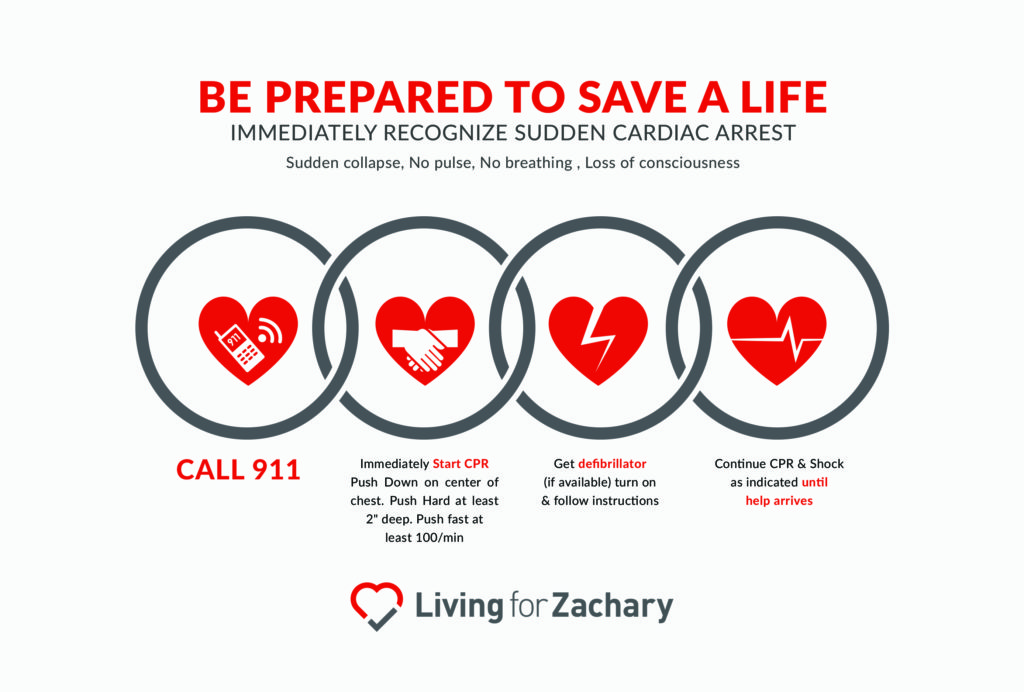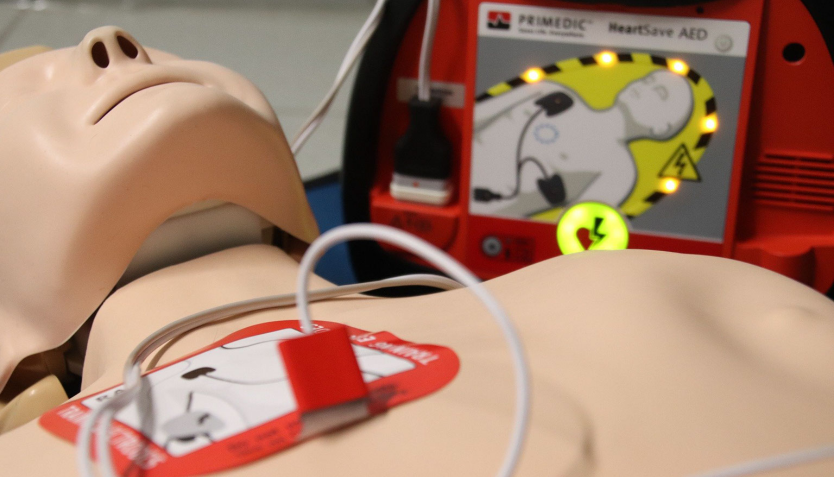Automated External Defibrillator: the name alone can look overwhelming at first glance. It can be easy to see an AED and be intimidated by this powerful technology, making some bystanders less likely to use them when needed. The truth is, AEDs aren’t as tricky as you may think!
A 2018 study from the American Heart Association found that bystander intervention with an AED is estimated to save 1,700 lives each year. [1] Learning how an AED works and is designed to help the person using it not only gives confidence to the user, but can help save countless lives in the future.
How AEDs Work
An Automated External Defibrillator, or AED, is an electronic device used to shock a heart back into proper rhythm after sudden cardiac arrest occurs.[2] AEDs do this by assessing the electrical activity in the heart via two pads placed in specific positions on the victim’s chest. The pads contain electrodes, which analyze the heart’s rhythm and determine whether a shock is necessary. [2] If needed, the device will then prompt the user to push a button that sends the shock to the heart. It is important to note that an AED will ONLY advise and administer a shock if the device deems it necessary for the victim’s heart.
After a shock is delivered, an AED will prompt the user to continue performing CPR until help arrives. In some cases, the AED may advise for another shock to be administered. AEDs are portable and are usually kept in easily accessible public areas, helping them to be retrieved quickly and brought directly to the location where a person has collapsed.
AEDs are Here to Help You
One of the biggest misconceptions about AEDs is that they are complicated devices and difficult to use. The truth is, AEDs are specifically designed to make a bystander’s job easy during an emergency!
From the moment an AED is turned on, the device walks a user through each step while also giving reminders to “Stand Clear” of the victim while it analyzes the heartbeat. Most AEDs also contain instructions or visuals for where to place the pads on the chest so the device can do its work. AEDs are even built with important safety features that will only allow a shock to be administered if the heart needs it, so users don’t need to be worried that they will accidentally shock a victim unnecessarily. [3]
Always be sure no one is touching the victim while the AED analyzes the heart rhythm and administers a shock to keep yourself, other bystanders, and the victim as safe as possible.

AED Training
The thought of using an AED at a moment’s notice can be intimidating. The best way to combat this intimidation? Spend some time around an AED to get a hands-on look at how they work and are designed to help you! CPR and AED certification classes allow students to use a training AED multiple times to get a feel for how the device works and allow you to ask any questions you may have about AED use. Most importantly, becoming trained in the use of an AED can “de-mystify” it in the eyes of the user, making it simply a powerful and easy-to-use tool for saving lives rather than an intimidating medical device.
The more people we have in our communities who are trained,
confident and ready to use an AED, the more lives we can save from sudden
cardiac arrest.
[1] American Heart Association


